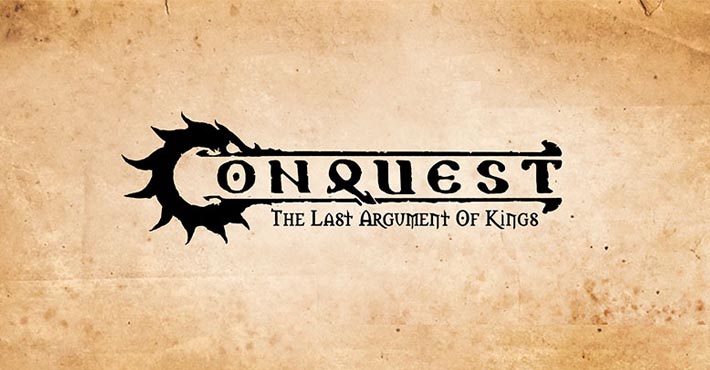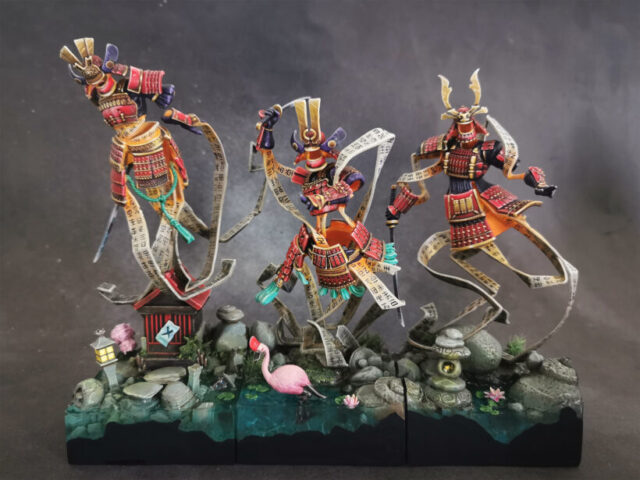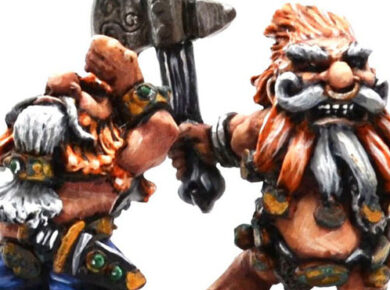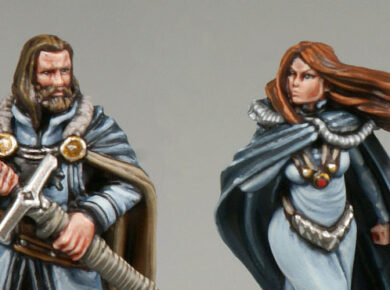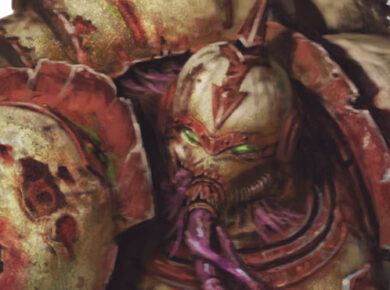Hello everyone,
Today, we’re diving straight into a key element that can make all the difference on the Conquest. Because let’s face it, mastering the terrain is already winning half the battle. Don’t forget to check out Chapter 1, Chapter 2, Chapter 3, Chapter 4, Chapter 5, Chapter 6, Chapter 7, Chapter 8 and Chapter 9 if you haven’t read them yet.
Zonal Terrain
Zonal Terrain represents areas of the battlefield that influence the flow of the game without blocking movement. These can include natural or rough features such as hills, swamps, rivers, or even ruined structures. Units can move through them normally, but each type of Zonal Terrain comes with specific rules that may provide tactical advantages… or present certain challenges, depending on the situation.
What to keep in mind about Zonal Terrain:
Zonal Terrain can be crossed by regiments, but some types carry negative effects, they might slow units down or even cause damage. Before the game begins, it’s essential to agree with your opponent on the zones that count as Zonal Terrain, along with the special rules they follow. This helps avoid confusion or disputes mid-game.
Here are a few commonly used special rules associated with Zonal Terrain :
- Elevation (X): Elevated terrain (such as a hill) increases the effective Size of any regiment on it. This allows the unit to see over other units or obstacles, making it ideal for ranged attacks.
- Obscuring: Moving through or targeting through certain terrain (like a forest) can reduce a unit’s firepower by lowering the effectiveness of its Volley actions.
- Obstructing: This type of terrain completely blocks line of sight. It is not possible to draw a line of fire through it.
- Dangerous Terrain (e.g., swamps, unstable rocks): Any unit crossing this terrain must make a roll, failures can cause wounds. This reflects the difficulty of navigating through treacherous or hazardous ground.
- Impassable Terrain: As the name suggests, this terrain cannot be crossed. Units must move around it.
Garrison Terrain:
Garrison Terrain represents solid and strategic structures such as buildings, towers, bunkers, or other fortified zones. It’s not just scenery — these terrains provide real tactical advantages, especially for infantry units that manage to occupy them.
What you need to know:
- You can’t simply march through garrison terrain like any other ground. A regiment must stop 1 inch away from it unless it attempts to occupy the position.
- Only infantry units can occupy a garrison, and only if their number of Stands does not exceed the terrain’s maximum capacity (usually capped at 4 Stands unless otherwise specified).
- Once inside, the unit benefits from:
- A defensive bonus (for example, +1 to Defense),
- A 360° line of sight, making it an excellent spot for defense or firing from a secure position.
- Leaving a garrison requires two Move actions, and the Stands must be repositioned around the terrain in a legal formation. If this isn’t possible, the regiment remains stuck inside — so plan ahead!
- When charging a garrison, the attacking unit does not benefit from impact attacks. The combat resolves as a standard melee fight.
- During a Clash (melee combat) involving a garrison, all the attacking regiment’s frontline Stands are considered in contact with the enemy. This allows the unit to fight fully despite the environmental constraints.
What if things go wrong?
If a regiment occupying a garrison is destroyed, an opposing regiment in contact with the terrain and eligible to occupy it can immediately take its place without spending an additional action. A strategic detail not to be overlooked!
In Conquest, terrain isn’t just scenery, it’s a core part of the strategy. Whether it’s cautiously crossing a swamp, taking a position on high ground to dominate the battlefield, or occupying a garrison to hold a line, every terrain-related decision can influence the outcome of the game.
Before starting your game, take the time to clarify with your opponent the nature and effects of each terrain zone. This helps avoid confusion and, most importantly, lets you make the most of your environment. Today, there is a wide variety of terrain types available on many specialized websites. While many players prefer richly decorated 3D tables for immersion, there are also 2D terrain systems, often in the form of mats. Although these may lack visual charm, they have the advantage of not obstructing miniature movement, a practical compromise, especially for competitive or fast-paced games. On our side, we prefer beautiful tables with detailed scenery, which you’ll discover in upcoming articles.
Don’t missed to support us on PATREON!
At the bottom of each post, you’ll find a list of all related blog entries, which we’ll update as the project evolves.
- Reviews : Conquest The Last Argument of Kings Chapter 1
- Reviews : Conquest The Last Argument of Kings Chapter 2
- Reviews : Conquest The Last Argument of Kings Chapter 3
- Reviews : Conquest The Last Argument of Kings Chapter 4
- Reviews : Conquest The Last Argument of Kings Chapter 5
- Reviews : Conquest The Last Argument of Kings Chapter 6
- Reviews : Conquest The Last Argument of Kings Chapter 7
- Reviews : Conquest The Last Argument of Kings Chapter 8
- Reviews : Conquest The Last Argument of Kings Chapter 9
- Reviews : Conquest The Last Argument of Kings Chapter 10
- Reviews : Conquest The Last Argument of Kings Chapter 11
- Reviews : Conquest The Last Argument of Kings Chapter 12
Questions, ideas, spelling error or just want to share your thoughts? Leave a comment below! And if you enjoy our work, a little support would help us keep creating more and more content.
See you soon!
